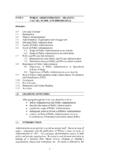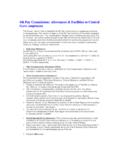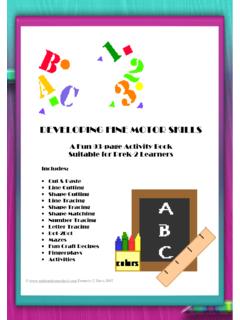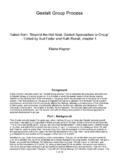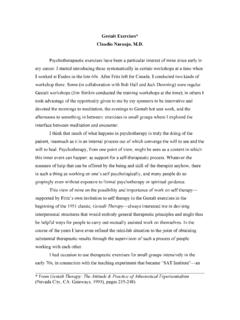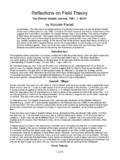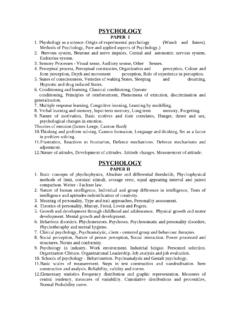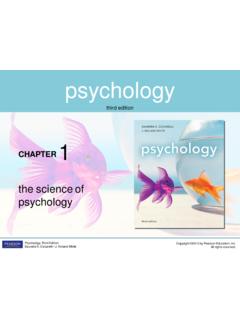Transcription of crash course study guide AP Psych - freewebs.com
1 1 CCrraasshh CCoouurrssee SSttuuddyy GGuuiiddee ffoorr AAPP PPssyycchhoollooggyy EExxaamm IINNTTRROODDUUCCTTIIOONN Psychology is the scientific study of thought and behavior. Psychologists study how the brain creates thoughts, feelings, and actions, and how internal and external environments affect them. Four primary goals of psychology: describe behavior, explain behavior, predict behavior, influence behavior. I. APPROACHES TO PSYCHOLOGY A. Biological: focuses on the relationship between the body and the mind B. Behavioral: concerned mainly with a person s observable responses to stimuli C. Cognitive: concerned with memory, perception, thought, and other mental processes D.
2 Humanistic: focuses on a person s capacity for self-fulfillment and growth E. Psychodynamic: concerned with the influences of unconscious desires and motives II. RESEARCH STUDIES A. studies test hypotheses (testable explanations of observed events) B. studies must have reliability and validity 1. Reliability: the study produces consistent results when replicated 2. Validity: the study accurately measures what it claims to measure. There are three types of validity: a. Construct: the study measures the effect that it is trying to measure b. Internal: the study shows that only the experimental factor caused an effect c. External: the study results apply to other situations III.
3 TYPES OF STUDIES A. Correlational study : expresses the relationship between two variables; does not imply causation B. Experiment: manipulation of an independent variable in order to understand its effect on a dependent variable. Identifies cause-and-effect. 1. Sampling: the process of choosing subjects to study a. Sample: a group of subjects selected for study ; a subset of a population b. Population: a group of people about whom the researcher wants to make conclusions. A sample should be representative of the population 2. Random assignment: random placement of subjects into experimental or control groups a. Control group: a group not subject to experimental manipulation 3.
4 Variables: things that can vary among subjects a. Independent variable: manipulated by researcher; produces a change in dependent variable b. Dependent variable: measured by the researcher c. Confounding variable: any possible variable (other than the independent variable) that may cause the observed effect IV. STATISTICS Statistical analysis describes data and quantifies relationships between variables A. Frequency distribution: an arrangement of data points based on how frequently they occur 1. Normal distribution: a frequency distribution with a symmetrical bell-shaped curve 2. Central tendency: measures of the center of the frequency distribution: There are three types: a.
5 Mean: the arithmetic average of data points b. Median: the middle data point c. Mode: the most frequent data point 3. Variability: how the data are dispersed or spread around the mean a. Range: the distance between the highest and lowest data point b. Standard deviation (SD): the average distance of a data point from the mean. A small SD means the scores are relatively close to the mean score; a large SD means the scores have a wider range around the mean B. Statistical significance: means that the differences observed are too big to have occurred by chance 1. Two types of errors occur in significance testing: a. Type I error: false positive; perceives an effect that is not there b.
6 Type II error: false negative; fails to perceive an effect that is there 2 NNeeuurrooppssyycchhoollooggyy I. THE NERVOUS SYSTEM The nervous system receives and transmits information. A. Central nervous system (CNS): consists of the brain and spinal cord. The brain is split into right and left hemispheres, which exhibit contralateral control (each hemisphere controls opposite side of body) and lateralization (left and right hemispheres have different functions). The three major parts of the brain are the hindbrain, midbrain, and forebrain. 1. Hindbrain: the top part of the spinal cord; includes the medulla, pons, and cerebellum a. Medulla: controls basic biological functions, such as breathing, swallowing, and balance b.
7 Pons: controls facial expressions, sleep, and dreaming c. Cerebellum: controls fine motor movements 2. Midbrain: coordinates basic movements with sensory information 3. Forebrain: large in humans; includes the cerebral cortex and subcortical structures such as the thalamus, hypothalamus, and basal ganglia a. Basal ganglia: regulates muscle contractions/movements b. Thalamus: incorporates and relays sensory information to the cortex c. Hypothalamus: controls motivated behavior, such as eating, drinking, and sex d. Hippocampus: helps process and receive long-term and spatial memory e. Amygdala: controls emotion and evaluation of stimuli f. Cerebral cortex: receives sensory information and transmits motor information.
8 The corpus callosum is a nerve tract beneath the cortex that connects the two hemispheres and allows them to communicate. The cerebral cortex consists of four lobes: Occipital lobe: processes vision Temporal lobe: processes sound Parietal lobe: integrates sensory systems; is involved in attention Frontal lobe: controls speech, learning, thinking, decision-making, and abstract thought B. Peripheral nervous system: includes all nerves that spread through the body from the brain and spinal cord. The peripheral nervous system has two divisions: 1. Somatic division: controls voluntary muscle movements and sense organs 2. Automatic division: controls involuntary actions and the internal organs; divided into two parts: a.
9 Sympathetic nervous system: gets the body ready for emergency action b. Parasympathetic nervous system: becomes active during states of relaxation II. NEURONS Neurons, or nerve cells, are the basic unit of the nervous system. Each neuron has three main parts. A. Soma: cell body; stores energy for the cell B. Dendrite: receives messages from other neurons and conducts the messages toward the soma C. Axon: sends messages to other neurons 1. Terminal branches (axon terminals): the end of the axon that contains neurotransmitters 2. Myelin sheath: insulates axons so signals can travel quickly a. Glial cell: creates myelin, supports and guides neurons, and helps repair neurons III.
10 INFORMATION EXCHANGE Neurons communicate by receiving and transmitting nerve impulses. A. The axon terminals of the presynaptic neuron are stimulated. The terminals contain synaptic vesicles, which empty neurotransmitters into the synapse between the neurons. Neurotransmitters activate the postsynaptic neuron, changing its voltage. Once the excitation threshold is reached, the action potential begins, and a neuron fires. 1. Synapse: the small gap between neurons where information is exchanged 2. Synaptic vesicles: places where neurotransmitters are stored until release into the synapse 3. Neurotransmitters: chemicals that stimulate neurons so they can communicate a. Excitatory: make neurons more likely to fire b.

